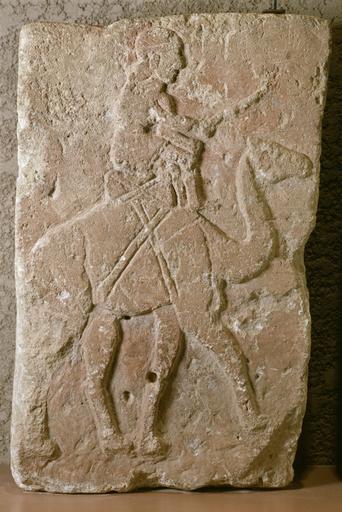MAKE A MEME
View Large Image

| View Original: | Syrian - Slab with Dromedary Rider from Tell Halaf - Walters 2115.jpg (1202x1799) | |||
| Download: | Original | Medium | Small | Thumb |
| Courtesy of: | commons.wikimedia.org | More Like This | ||
| Keywords: Syrian - Slab with Dromedary Rider from Tell Halaf - Walters 2115.jpg This relief was excavated in northern Syria at the site of Tell Halaf the capital of a small independent city-state known as Guzana to the Assyrians who conquered it in the late 9th century BC More than two hundred such stone reliefs called orthostats decorated the fašade of a temple-palace built in the 10th century BC by a local ruler named Kapara He reused the blocks from one or more pre-existing structures and carved an inscription in cuneiform on each one that states Palace of Kapara son of Hadianu The blocks were placed so that limestone ones painted red alternated with others of black basalt While the human images have been depicted in the less sophisticated local style many of the animal reliefs such as the goat may have been modeled on finely carved ivories imported from northern Syria and Phoenicia that were found at the site A rider perches atop the hump of a dromedary camel urging it on with a staff Crossed bands securely fasten the saddle onto the animal The curving neck rounded body and unevenly placed hooves re-create the rocking sensation of a camel in motion This image represents an Arabic caravan trader From the beginning of the 1st millennium BC the domestication of dromedaries made the caravan trade possible This relief from Guzana may be the earliest representation of such a dromedary rider There are traces of King Kapara's inscription on the top edge of the stone century 10 BC Aramaean limestone red paint cm 64 7 41 9 accession number 21 15 37529 Max von Oppenheim 1911-1913 excavated at the lower course of the exterior wall of the temple of King Kapara at Guzana Tell Halaf Syria and sent to the United States for sale Alien Property Custodian of the United States by 1943 Walters Art Museum 1944 by purchase with the assistance of the Metropolitan Museum of Art New York Museum purchase with funds provided by the S A P Fund 1944 Translation On top Palace of Kapara son of Hadianu In Search of Ancient Treasure 40 Years of Collecting The Walters Art Gallery Baltimore 1978 Faces of Ancient Arabia The Giraud and Carolyn Foster Collection of South Arabian Art The Walters Art Museum Baltimore 2008 place of origin Tell Halaf in present-day Syria Walters Art Museum license Ancient Near East art in the Walters Art Museum Reliefs from Syria Media contributed by the Walters Art Museum needs category review Tell Halaf Camel riding in art | ||||